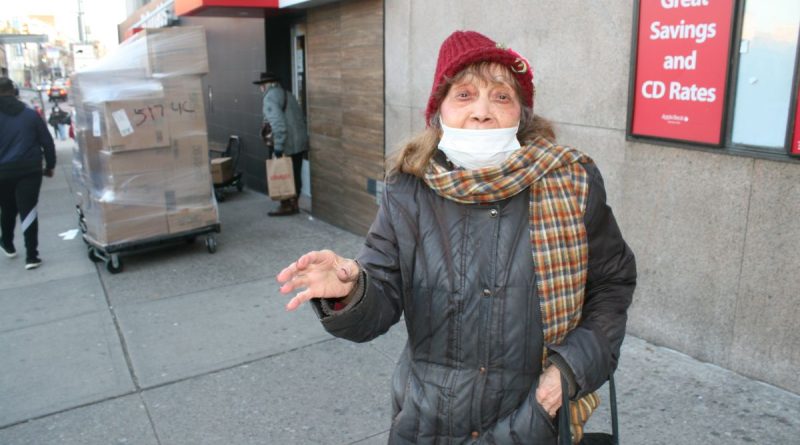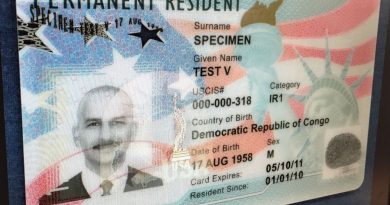New York immigrant families most affected by COVID-19 ask to be a priority in 2022 budgets | The State
In theory in draft budgets of the State and the City of New York by 2022 are trying to balance the accounts not to touch a single dollar for the optimal functioning of public schools, and directing more resources to the feeding plans of the poorest. In reality, you have to try to shovel the immense financial hole caused by the coronavirus pandemic.
And that will only be possible, if I know receive special funds from Washington.
Everything indicates that if there is no financial aid from the new Federal administration of Joe Biden, the immigrant families most devastated by COVID-19 in the Big Apple, they could see the worst side of this tragedy in the coming months.
At preliminary spending and investment plan of Mayor Bill de Blasio, calculated at $ 92.3 billion for the next fiscal year, One of the crucial points is the total reopening of the public schools of the Big Apple in the fall, whose classrooms will be occupied in a 41% by students of Hispanic origin.
This objective will only be possible if the City receives relief from $ 2 billion of coronavirus relief from the federal government that are needed for 1,700 New York City Public Schools open your doors five days a week.
“Our schools have to come back in September, completely,” De Blasio said when he presented his spending plan that already looks very deficit, given the millions of dollars that the city stopped receiving since the pandemic spread last March and forced the economic closure.
Specifically, in the preliminary draft budgets, the focus is on putting more dollars on the side of the programs that guarantee food availability, COVID-19 tests, access to vaccines regardless of immigration status, free legal support and some programs to avoid evictions due to late rent.
More complicated “budgets”
While the exercise of balancing expenses is very complicated for the New York authorities, for thousands of undocumented immigrant families who lost their income completely, the future looks even more intricate. And increasingly painful.
“My husband never got a job in restaurants anymore. Before, only with your tips we could cover many expenses. And I could help him with temporary jobs, now I can’t move from the house, because I have my three children at home because I opted for distance classes”, Narrated the Mexican Lupe Solórzano, resident for 18 years of Upper Manhattan.
With months of back rent and without receiving any federal relief check, the Solórzano family considers that the reopening of the schools in a “safe way” would mean the first step to to be able to regain “a certain normality”.
“Online education is never the same. We understand that if we want to break the cycle of our poverty, we have to bet everything that they go to college in the future. And second, if they are in classes we we can go out to solve as we have always done. But everything now depends on how the pandemic goes ”, shared Lupe.
The panorama of school buildings with similar services, before the crisis, looks like a complicated subject.
Just to cite one example, the overtime pay for teachers, known as ‘pay per session’, would be reduced by $ 21 million next fiscal year, shows the municipal president’s proposal.
That could mean fewer after-school activities or fewer resources for the educators working in those programs. Also, in the savings plan projected by the Mayor of the City of New York It is detailed that the different agencies will only be able to fill a vacancy if three other jobs are empty.
Specifically, this mathematically translates into fewer staff on campus in the future to attend to the educational quality of each student.

There are priorities
A spokesperson for the New York City Council, where the spending and investment plan for 2022, stressed that the Mayor’s preliminary budget only marked the beginning of the negotiations: “we will be determined that the social safety net and initiatives to helping communities of color disproportionately affected by COVID-19 ″.
Councilor Ydanis Rodríguez assured that there could be no other formula for “Recover the city from the pandemic” If we do not include in this equation those who are being the hardest hit by this public health crisis.
“With the closing of the school buildings last March and with the current hybrid scheme of face-to-face and distance classes, it could be ensured that there was a saving in 2020 in normal expenses from schools. This budget drags a crisis from the Trump era. Now we must count on the new federal administration and Congress to overcome this deficit ”, reasoned the Dominican councilor.
Waiting for money from Washington
Those who are in charge of organizing New York State expenses they also think the same. Governor Andrew Cuomo showed two packages last week. In a more austere option, it is assumed that New York will receive federal funds that amount to $ 6 billion, the other more optimistic option represents $ 15 billion in disbursements from Washington, a figure that is closer to the current budget deficit of the state.
In the accounts of the most optimistic investment project of the state agent, would be destined $ 1.3 billion for overdue residential rental assistance plans, $ 150 million to address food insecurity and $ 10 million in ‘Liberty Defense Fund’ offering free legal support to undocumented New Yorkers. There is also an ambition to add $ 130 million to help small businesses such as restaurants affected by the pandemic.
“It’s $ 21 billion in lost revenue for two years in a row. Why the loss of income? They were closed, people didn’t work, they didn’t pay taxes. The gap was projected to be worse, but as the economy began to function again, the gap began to close, ”Cuomo said.
The controversy: taxes on the richest
Given the proposal of a group of state legislators from increase taxes in different ways to the richest, the state president shows very distant. However, Colombian Assemblywoman Catalina Cruz who represents the Jackson Heights- Corona District 39, in Queens, he assured that “the budget dance is just beginning. “
“We will have to negotiate that and we will fight it. All the reports indicate that large corporations and the wealthiest people in New York have increased their income during this public health crisis. Meanwhile, we don’t have to describe what happened to the undocumented working class, that became an essential workforce ”, explained the assembly member.
In Cruz’s view, there are two good signs for immigrant communities in Cuomo’s investment scheme for 2022: investment in food programs so that no new yorkers go hungry and legal aid for the undocumented.
A decadence never seen
The Dominican Carmen Ramírez, With 50 years of residence in the Big Apple, she does not remember a stage “as terrible” as the one the city has suffered since “this virus appeared.”
The 80-year-old immigrant, far from complex technical budget calculations, ensures that the more is invested in defeating COVID-19, the closer the recovery will be.
“This is a thriving city that I have never seen like this in so many decades. If it goes more money to fight this virusEveryone will be able to go back to the street to work, study, build and make it great again ”, said Carmen.
Meanwhile, the Hispanic retiree Alex Casello who has been 40 years living in the ‘city of skyscrapers’, he exhibits without a doubt that he had never seen on the streets so many decadent images of poverty.
“The City has to invest in schools where students feel motivated to go. We must also teach our immigrant communities that things cost. And that we must pay our taxes. We know that in this system somehow what we pay is going to come back to us. The reconstruction of New York will depend on those who came looking for a dream ”, concluded Casello.

Let no New Yorker go hungry:
- 2 million New Yorkers They face needs to pay for their food according to reports from the City Council.
- 53% increased lawsuits on public pantries and other free food programs in NYC since March 2020.
- 1,000 pantries and dining rooms are in the five boroughs of NYC.
- $ 52 million is the amount planned for food security plans in fiscal year 2021-2022.
- $ 25 million were the emergency funds approved for pantries in 2020.
- $ 150 million Governor Cuomo proposes in his investment plan, due to be approved in July, to fight hunger across the state.
- 15% was the increase of the new Joe Biden administration to the national budget of the SNAP coupons, under the argument that 1 in 5 Hispanic households in the country they don’t have enough resources to feed themselves.
- 3rd place is New York for the states with the highest percentage of immigrants not included in federal aid packages, followed by California and Texas.
- 530,000 New York immigrant families who work in the informal economy (street vendors, sex workers, domestic workers, day laborers and other sectors such as construction and maintenance in general) have been excluded from relief plans of the federal administration.
- 1 in 5 individuals living in NYC are currently in some situation of rent moratorium on their residences.
.



